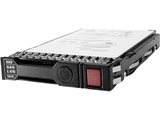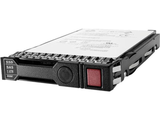Reasons to Choose Flash-Optimized Network for Business
Technology continues to evolve-- giving way for developments in file storage arrays. These developments allow flash storage arrays to meet the network demands in small to medium-sized businesses.
Many competitive vendors offer different types of all-flash storage arrays at more affordable prices nowadays, which makes the flash storage decision-making process more complex for business owners, IT managers, and IT professionals.
Some of the factors that drive the expansive growth for better enterprise storage include rapid data expansion, huge costs of owning hardware, and the need for quick data retrieval. However, those are just the tip of the iceberg.
The Rising Popularity of All-Flash
Flash storage proved itself capable of improving network performance. It also offers storage capacity matching that of a hybrid flash in a smaller footprint.
Flash storage allows businesses and IT organizations to experience benefits including reduced physical rack space and power consumption, and cooling reduction.
Flash storage used to be expensive and limited. However, thanks to recent technological development, flash prices significantly dropped which makes it a more accessible option for small to medium businesses.
Different Types of Flash Arrays
Like most things in the world, not every flash array storage is created equal. There are three types of flash arrays that you need to know before you choose one for your business network.
Here are the different types of flash arrays:
Hybrid Arrays
Hybrid arrays, as the name suggests, are a hybrid option that has an auto-tier functionality that can accelerate the speed of application at a minimal incremental cost.
This type of array is a product of combining a flash tier in addition to a spinning disk. Hybrid arrays allow data centers to achieve better performance compared to just using a spinning disk alone.
Converged Flash Storage Array
This type of flash array supports block workloads, file shares, and it offers the scale and flexibility of a high-end array. Converged flash storage supports disk media while offering the performance of an all-flash array.
All-Flash Array
This type of storage array is built exclusively with solid-state drives. All-flash array offers optimum performance and optimized architecture.
This type of storage array is more expensive than hybrid and converged, but it is preferred due to its performance and flexibility. An all-flash data center is on the road map for many businesses.
Benefits of an All-Flash Array Storage
Here are some benefits that come with all-flash array storage:
Great performance and speed
All-flash array storage offers scalable performance. However, before choosing all-flash storage, you need to make sure that your architecture supports an all-flash environment.
Scalability and flexibility
Some all-flash storage devices are enabled by both hardware and software redundancy. They also have non-disruptive hardware and software upgrades.
All-flash storage can accommodate explosive data growth and allows the business to scale to their needs accordingly.
Dependable recovery and reliable data backup
All-flash arrays support rich data services like clustering or multi-site replication. It can also handle unplanned controller failures or maintenance of a controller node.
An all-flash array offers a flash-integrated flat backup that expedites and restores while maintaining the minimum impact of backups on apps.
Offers data mobility
All-flash data storage array enables you to move between applications, systems, storage, and physical locations. It also allows your team to optimize storage and manage workloads without disruption.
Cost efficiency
All-flash storage may be more expensive than hybrid and converge, but it is still an affordable option for small to medium businesses. It is cost-efficient in the sense that it offers amazing performance and speed, reliable backup, and secured data mobility while also reducing your physical space and power consumption.
Conclusion
There is no one-size-fits-all storage solution, but a flash-optimized network and an all-flash storage array come pretty close. However, at the end of the day-- the business IT manager and professionals are the people who understand the current storage environment in the company.
IT professionals can help project future needs based on the business objective and financial budgets. They can also determine if your current structure can accommodate an upgrade to a flash-optimized storage solution and let you know what changes are needed if you want to push for this upgrade.
The price of all-flash arrays has significantly dropped, while the cheaper alternatives like hybrid and converged flash storage arrays offer decent function as well. You really cannot lose with a flash-optimized storage solution. You can take advantage of their benefit especially now that these advanced storage solutions are available to nearly every small and medium-size business.
Recent Posts
-
Unleashing Speed and Security: The HPE 1.6TB SAS-12Gbps SSD Powerhouse for ProLiant Gen10 Plus
HPE 1.6TB 2.5-inch SFF Digitally Signed Firmware SAS-12Gbps Basic Carrier Mixed Use Solid …Apr 7th 2025 -
Exploring the HPE 1.6TB SAS- Mysteries 12Gbps Write Intensive SSD: Powering ProLiant Gen8 and Gen9 Servers with Mainstream Endurance
HPE 1.6TB 2.5-inch SFF Mainstream Endurance SAS-12Gbps Smart Carrier Enterprise Mainstrea …Apr 6th 2025 -
Why the HPE 1.6TB SFF Write Intensive SSD is a Game-Changer for ProLiant Servers
Maximizing Performance and Reliability: HPE 1.6TB 2.5-inch SFF SAS-12Gbps Smart Carrier Write I …Apr 5th 2025




